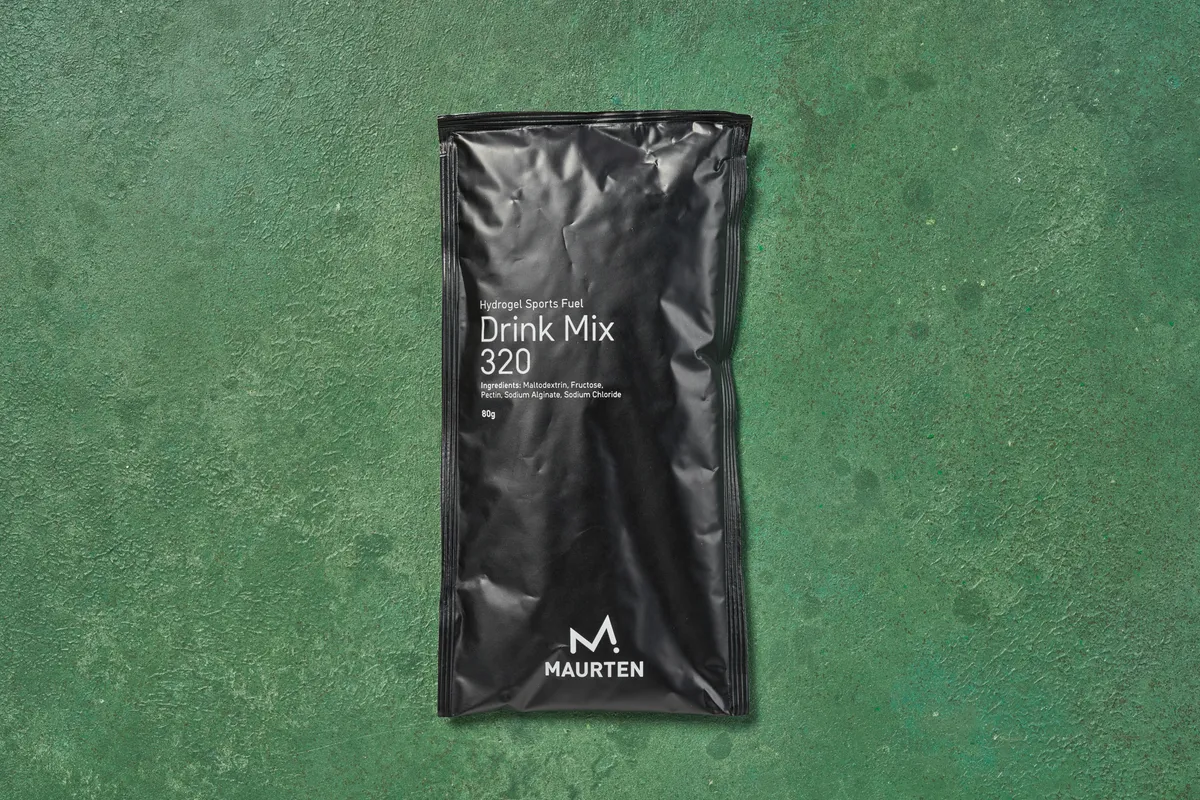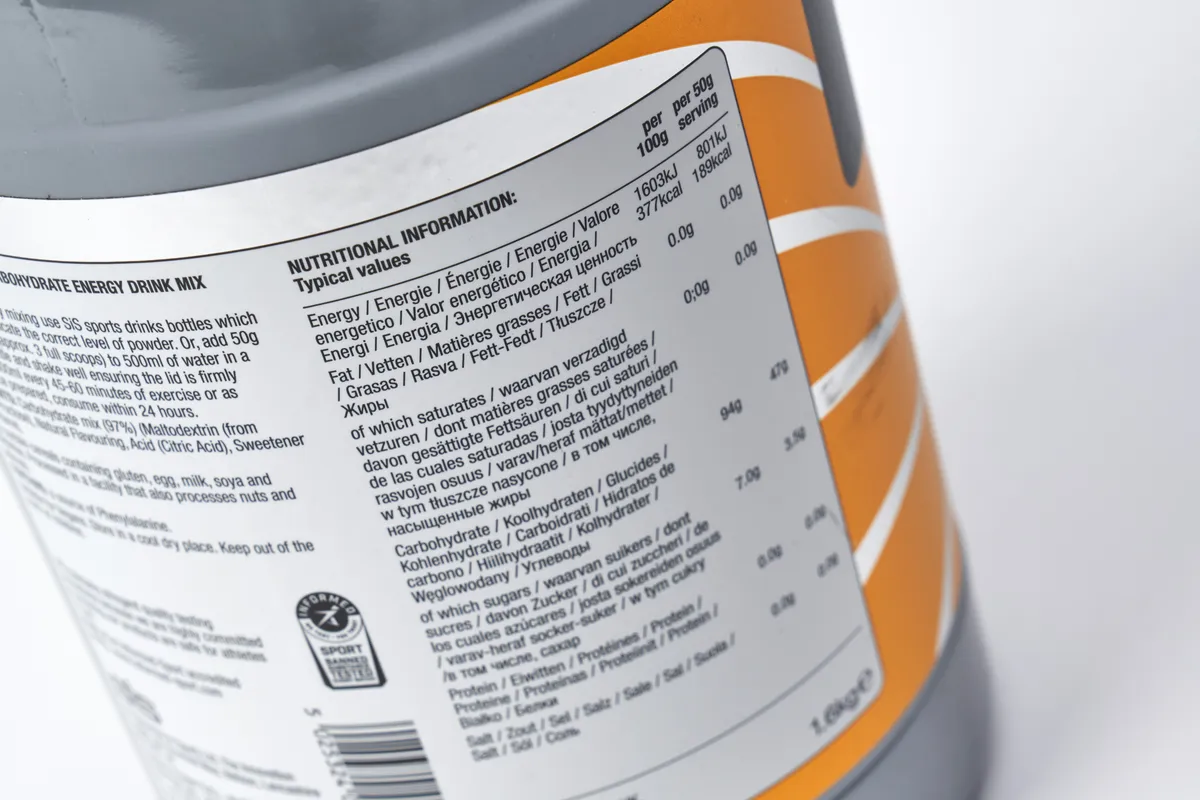Over the summer, I tested nine different cycling energy drinks as part of a bumper group test.
I sampled at least three servings of each drink, which amounts to 30 bottles or 15 litres, on long and shorter, faster rides.
After chugging three UK gallons of sugary stuff, my teeth haven’t rotted, but I have learnt a lot about cycling energy drinks.
Speaking to experts to write a buyer’s guide helped, too.
From their efficacy to taste and teeth-destroying potential, let’s run through what I learnt testing energy drinks.
5 things I learnt testing 9 cycling energy drinks
1. A recipe for success not GI distress

Some of my colleagues winced as enough energy drink tubs accumulated on my desk to open a high street branch of Holland and Barrett.
They feared for my stomach, but the days when energy drinks wreaked gastrointestinal carnage are long gone.
The majority I tested were reasonably palatable and easy on the stomach as long as I used them correctly.
In fact, an ill-timed can of fizzy drink was more likely to make me feel sick than any of the energy drinks I tried (apologies to anyone in earshot as I burped my way up Machynlleth Mountain).
That said, unless your gut is well trained, it’s best to avoid high-carb drink mixes in the heat – I go into more detail as to why in our buyer’s guide to the best energy drinks.
The reason cycling energy drinks work so well is that “they kill two birds with one stone” as Dr Tom Kirk, of Custom Cycle Coaching, snappily puts it.
Depending on their concentration and carb content, energy drinks meet some or all of your hourly fuelling and hydration needs in a convenient way.
The need to unwrap an energy bar or gel can provide an excuse to miss your carb intake target.
But this isn’t the case with a bottle of energy drink – simply guzzle and go.
2. Forget beans on toast

By making my next point, I risk expulsion from Audax UK and the wider gravel riding community.
Some cycling traditionalists consider sports nutrition products the Devil’s work and favour pints of tea and pork pies.
But energy drinks are superb fuel for self-supported, long-distance rides.
Now I don’t set off for an Audax or bikepacking trip without several high-carb energy drink sachets stashed in my frame bag (it’s worth knowing how to make your own energy drink when you run out).
As an example, on a big day out earlier this year, I expended nearly 9,000 calories in 280km.
During this 10-hour ride, I took in 1,100 calories from carb mix, alongside lots of solid food, with no stomach trouble.
In ‘real food’ terms, this equates to two plates of beans on toast. I know which fuelling option I’d find easier to digest.
Despite spring water and freshly foraged loganberries being quintessential gravel fare, I like fueling with energy drinks off-road too.
Technical terrain makes it harder to eat on the bike when energy demands are through the roof.
3. Sugar is your friend (on the bike)

Sugary processed foods get a bad rep, somewhat justifiably.
But my training and recovery have benefited from abandoning a puritanical approach to on-bike fuelling.
What’s true when sedentary doesn’t hold when you need a carb-dense, readily-digestible source of energy, which carb drinks provide.
While exercising, you don’t need to worry about energy drinks causing blood sugar or insulin spikes.

At moderate to high intensities, your energy-hungry muscles absorb the glucose more or less immediately.
After intense training sessions when swigging several bottles of energy drink contributed to a high carb intake, I felt less hungry in the following hours and days.
My recovery improved too in terms of sleep and muscle ache. Scientific evidence backs this up. A 2020 study into elite marathon runners found that high hourly carb intake reduced muscle damage.
In essence, more sugar on the bike can reduce sugar consumption off it. Slower post-exercise metabolism means the calories are likely to be surplus to requirements and stored as fat.
This is something to bear in mind if you’re trying to lose weight through cycling.
4. Your teeth won’t fall out

The final word will go to my dentist at the next check-up.
But it appears that three months of testing energy drinks will not have contributed towards his savings pot for the new Specialized Tarmac SL8.
My teeth have not rotted or discoloured despite drinking all that sugar on the bike.
I’m not sure why this is.
A study published in the British Dental Journal in 2019 did indicate high rates of tooth decay in elite cyclists despite them brushing twice daily.

Perhaps my overall sugar consumption hasn’t increased.
I have continued diligently brushing my teeth and followed the advice of dentists to wash down a sip of energy drink with plain water.
It’s also best to avoid carb drinks containing citric acid. Ironically, this is added to reduce sweetness but it can react with sugar on tooth enamel and precipitate decay.
5. Taste matters but not that much

It’s pointless to prepare a bottle of the most scientifically formulated carb mix if you aren’t able to drink it because you don’t like the taste.
So taste is clearly important. Most energy drink powders come in an array of flavours and you should be able to find one you like.
Ideally, you’ll find several.
Dr Tim Podlogar, a nutritionist at the Bora-Hansgrohe WorldTour team, told me that, by the end of a Grand Tour, riders get sick of the flavour of their nutrition sponsor’s drink.
So much so that one sip from another team’s drink tastes like nectar.

Not having to quaff multiple bottles of the same drink for 21 stages, amateur riders are unlikely to contend with this degree of ‘flavour fatigue’.
Therefore, it’s arguably less important that we love the taste of the energy drink we use.
The anecdote does suggest it’s wise to have a variety of energy drinks to hand – your favourite flavour might not always cut it.
My experience with high-carb energy drinks challenges the rule that you should like the taste of your energy drink.

Low- to medium-strength carb mixes tend to come in a wide range of pleasant flavours: High5’s berry flavour was my pick of the bunch.
But as carb content increases so does sweetness and viscosity. This gives a thick, syrupy consistency to drink mixes with 80g to 90g carbohydrates per serving.
With the exception of SiS Beta Fuel, their flavour is usually neutral so as not to overwhelm your palate.
You’d be right to think consuming them isn’t all that pleasurable. And their high relative cost and carb content means they’re not suitable for everyday rides.
But on long or intense rides, the benefit of their steady trickle of energy more than justifies their challenging taste.

